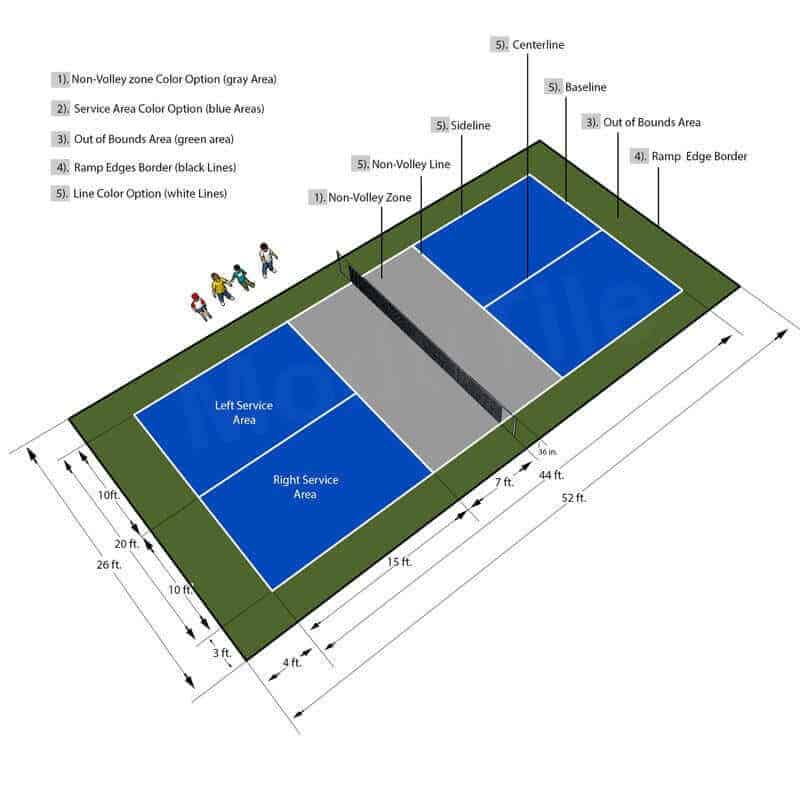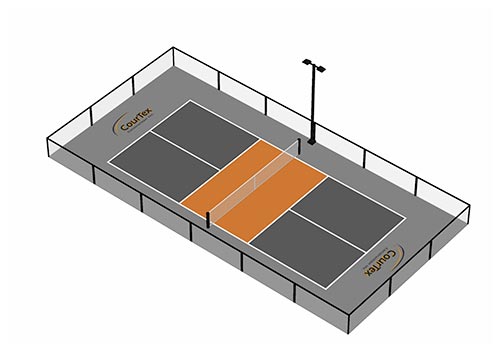Lasting Practices in Pickleball Court Building You Must Know
As the popularity of pickleball proceeds to rise, so as well does the need for sustainable methods in court building and construction. The impact of these techniques extends far past the court itself.
Choosing Eco-Friendly Materials
Selecting green materials is a crucial step in the building of sustainable pickleball courts. The choice of sustainable products not just minimizes environmental impact but also enhances the longevity and performance of the court. Secret materials include reused rubber for the surface, which offers excellent longevity and shock absorption while drawing away waste from land fills.
Furthermore, utilizing locally sourced products lowers transport emissions and sustains local economic situations. Pickleball court construction. Using indigenous hardwoods for fence and seating can provide a lasting aesthetic while ensuring strength against the components.
Including permeable materials for court foundations can better add to sustainability by permitting all-natural water drainage and lowering overflow. These options not just protect regional communities but additionally promote much healthier play settings.
Efficient Water Drainage Solutions
While the option of environmentally friendly products is essential, carrying out efficient drain solutions is just as vital for maintaining sustainable pickleball courts. Correct water drainage not only safeguards the court surface area from water damage however additionally reduces erosion and overflow, advertising environmental honesty.
Efficient drain systems can consist of absorptive paving, which permits water to penetrate the ground instead than pooling on the surface. This decreases the chance of standing water, which can lead to mold and various other upkeep concerns. In addition, including purposefully positioned drain networks and swales can guide excess water far from the court area, guaranteeing a dry having fun surface and stopping soil erosion.
Making use of indigenous plants in the landscape design around the courts can better boost drain by absorbing excess water and reducing overflow. These plants require much less irrigation and advertise biodiversity, lining up with sustainable methods.
Moreover, it is vital to consistently preserve the water drainage system to ensure its lasting efficiency. This includes clearing up debris and surveillance for obstructions. By focusing on effective drainage options, pickleball court producers can considerably contribute to the sustainability and durability of the center, ultimately profiting both players and the atmosphere.
Energy-Efficient Lights Options
As the demand for pickleball remains to expand, integrating energy-efficient illumination options right into court design has become increasingly vital for sustainability. Standard lighting systems commonly eat too much power, adding to greater functional costs and ecological influence. Therefore, adopting modern-day, energy-efficient technologies is necessary for both brand-new building and constructions and renovations.
LED (Light Emitting Diode) lights sticks out as a leading choice because of its long life and energy savings (Pickleball court construction). Contrasted to standard illumination, LEDs use around 75% less power and can last as much as 25 times longer, significantly reducing maintenance expenses. The directional nature of LED illumination reduces light pollution, making sure that lighting is focused on the court rather than bordering locations.

Sustainable Surface Alternatives
Exploring sustainable surface options for pickleball courts has actually gotten grip among gamers and building contractors alike. The focus on eco-friendly materials not only straightens with the expanding ecological recognition yet additionally boosts the efficiency and resilience of the courts.
This material supplies excellent shock absorption, reducing the danger of injuries for players while promoting sustainability. These floor tiles are simple to change and set up, and their versatility allows for different court arrangements.
All-natural turf courts are likewise arising as a lasting selection, advertising biodiversity and reducing the heat island impact. Nonetheless, they call for normal upkeep and water, which might not straighten with all sustainability objectives.

Water Conservation Methods

Another reliable technique entails the setup of rainwater harvesting systems. These systems accumulate and store rain for use in keeping court surfaces and landscape design. This method not just saves potable water however additionally minimizes dependence on local resources.
Furthermore, using drought-resistant landscaping around the courts is important. Indigenous plants require less water and are better adjusted to local climate problems, hence decreasing total water consumption. Furthermore, making use of efficient irrigation systems, such as drip watering, makes sure that water is provided straight to plant roots, reducing dissipation and waste.
Verdict
Including sustainable practices in pickleball court construction substantially adds to ecological conservation Learn More and source performance. Utilizing environmentally friendly materials, carrying out efficient drain options, and adopting energy-efficient lighting alternatives can greatly decrease ecological impact. Discovering sustainable surface alternatives and using water preservation methods enhance the total sustainability of these leisure centers. By prioritizing these techniques, the building and construction of pickleball courts can line pop over to this site up with broader ecological goals while advertising longevity and performance within communities.
As the popularity of pickleball continues to increase, so also does the demand for sustainable practices in court building.Picking environmentally friendly materials is a vital action in the building and construction of lasting pickleball courts. By focusing on energy-efficient illumination alternatives, pickleball court producers can add to a much more sustainable future while meeting the demands of stakeholders and players alike.Incorporating lasting surface alternatives not just boosts the performance of pickleball courts but additionally paves the way for applying efficient water conservation techniques.Including sustainable techniques in pickleball court building considerably adds to environmental conservation and source performance.